Key takeaways:
- Why look for Asana alternatives? Users often find Asana too simplistic for complex projects, with limitations on customization and visibility.
- What makes Wrike a better option? Wrike offers superior scalability, enhanced collaboration features, and detailed reporting capabilities compared to Asana.
- How does Trello compare to Asana? Trello provides a better Kanban experience and more affordable pricing, making it suitable for small teams.
- What are Monday.com’s key advantages? Monday.com has a spreadsheet format, easier time tracking, and better pricing than Asana, but lacks native proofing features.
- Which alternatives should larger teams consider? Wrike is recommended for its customizable project management tools, ideal for complex, scalable workflows.
Most organizations that look for Asana alternatives do so because:
- Asana is too simplistic to customize and scale. Asana is best suited for basic task management, rather than complex enterprise project management. For instance, the platform doesn’t allow any global updates or team-level customizations. Plus, at scale, the fact that there’s no way to hide completed subtasks can be really annoying.
- Its reporting and visibility are limited. While Asana’s charts are colorful and easy to build, they’re not particularly detailed or insightful.
- It only permits one assignee. Asana does not allow users to assign more than one individual to a task or approval, which makes collaboration difficult, creates confusion around accountability, and results in multiple tasks to capture duplicate work.
- Asana has no account-wide standardization. Many Asana features are tied to the specific project they live in, making scalability and standardization across the account difficult and completely manual. If you want to use the same request form, template, or automations from project to project, you’ll have to duplicate them each time you create a new project.
In this guide, we share 11 Asana competitors for you to consider.
We start with Wrike, our customizable, scalable project management software built with large teams in mind. We share some of our key features — including reporting, visibility, and team collaboration tools — and show you how they compare to Asana.
It’s easy to make the switch from Asana to Wrike. Book a demo today to get started.
1. Wrike: Best Asana alternative for larger teams
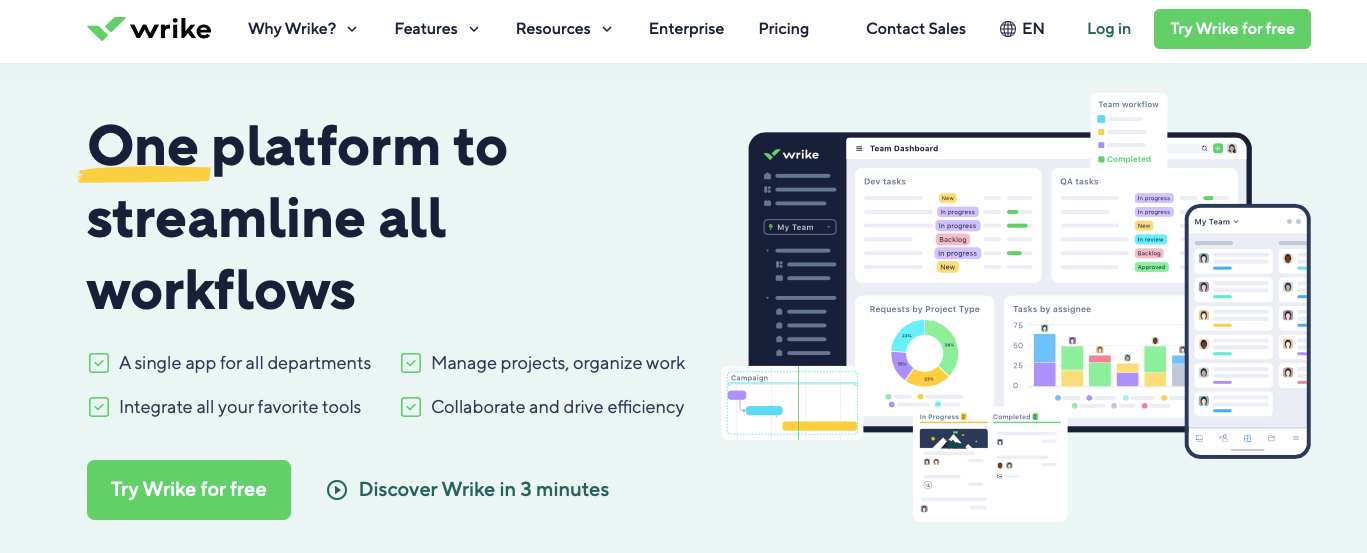
Wrike is a work management platform we built to help large teams manage complex projects at scale. Our software has been recognised by Forrester as a leader in collaborative work management on numerous occasions.
Wrike is used by over 20,000 companies in over 140 countries, including major brands such as Siemens Smart Infrastructure, The Estée Lauder Companies, Sony Pictures Television, and Walmart Canada.
In our opinion, Wrike is better than Asana thanks to its:
- Ease of use and scalability
- Better reporting and visibility
- Enhanced collaboration features
Let’s explore each factor in turn.
Wrike is easier to use, customize, and scale
Until recently, many users may have considered Asana’s modern user interface to be more intuitive than Wrike’s. But with Wrike’s recent UI overhaul as part of Wrike Lightspeed, users can now leverage the robust capabilities of Wrike in a more simplistic design.
- Wrike keeps you organized at scale. While Asana can become cluttered with completed subtasks, Wrike lets you maintain clarity at scale. You can use folders to house multiple projects or tasks, for example — making it easier to stay organized and build a scalable work environment.
- Wrike is flexible to the way you want to work. Many project management tools force you into processes and structures that just don’t make sense for you. As one of the most customizable and open project management solutions on the market, Wrike adapts to your needs. For instance, custom item types can be used for the resources or tasks that don’t fit into the standard project hierarchy.
- Wrike lets you understand how different projects interrelate. One of Asana’s major flaws is that you need to manage and configure every project individually. But this is just not how organizations work. With Wrike, cross-tagging allows you to understand how all your projects interrelate, so you get a truer (and clearer) picture of your work at scale.
- Wrike brings different stakeholders together on the same task. In Asana, you can only assign one person to each work item, meaning you end up duplicating tasks to capture the work for each assignee or stakeholder. With Wrike, you can assign multiple colleagues and approvers to unlimited projects or tasks, so they can discuss, review, or approve items together.
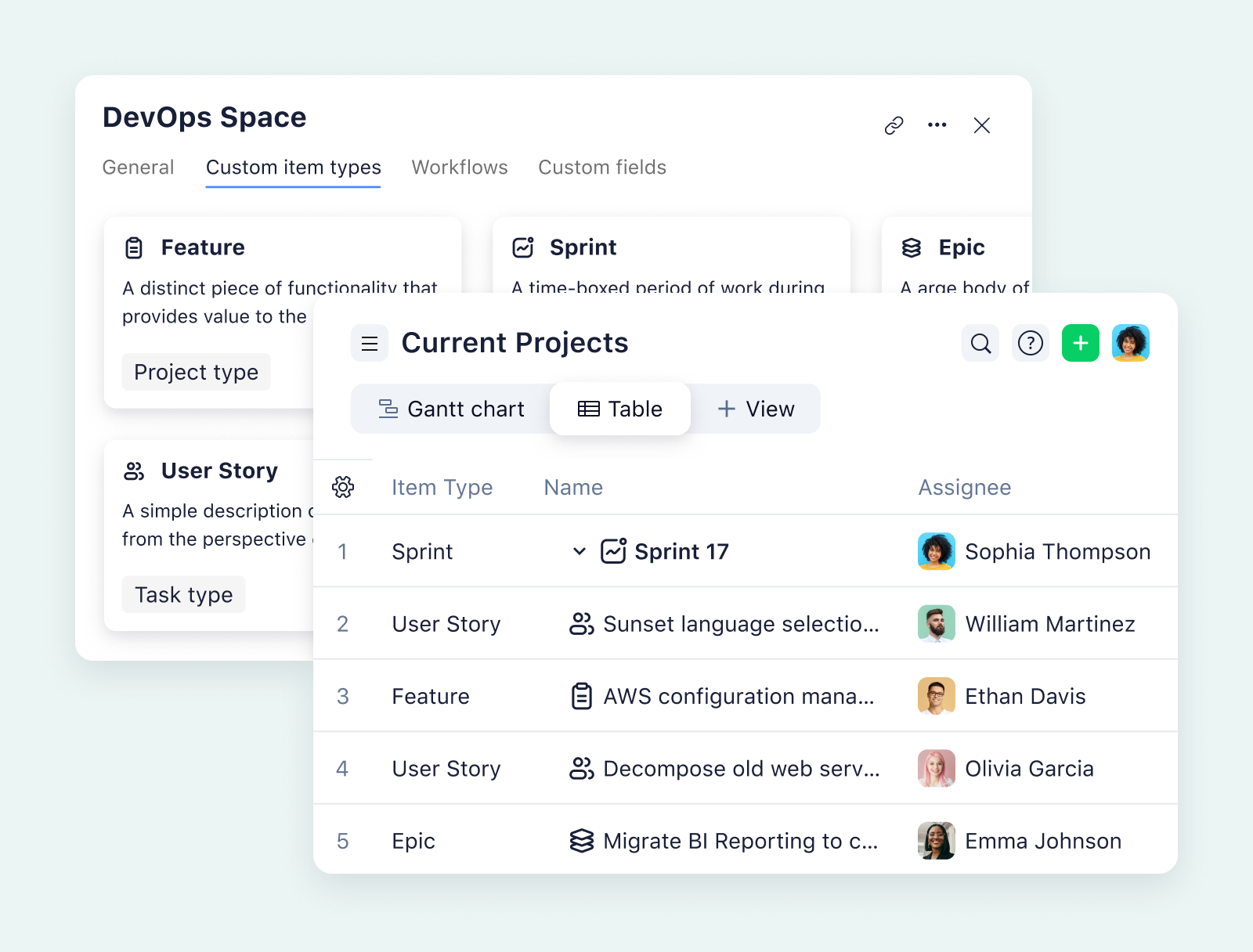
Wrike offers superior reporting and visibility on your work
Asana’s design may be simple, but so are its reporting capabilities. The whole platform looks great, but if you want to keep track of your work — or analyze it — you’ll find Asana has its limitations.
On the other hand, Wrike provides real-time visibility over all aspects of your projects, alongside in-depth automated reporting, which significantly reduces the time teams spend generating and distributing reports.
- Wrike lets you choose how you want to track your projects. Team members can use Gantt charts, Kanban boards, and more to track progress. This way, you can have visibility on your work — including project progress, task dependencies, check-ins, and milestones — in the way you prefer.
- Wrike gives every team member a personalizable view of their work. With personal dashboards, every colleague can see the work they need to complete and when. For instance, our user-friendly dashboard shows personal due dates, task lists of what individuals need to prioritize, and notifications on work updates.
- Wrike makes sharing deep, detailed reports easy. Wrike lets you create shareable reports on projects, tasks, and subtasks, so you can get a complete 360-degree view of your team’s productivity and efficiency. They’re easy to produce, based on templates, but they’re customizable to what you need.
- Wrike enables easy tracking of project costs. Wrike’s resource management tools also give you visibility on your budgets and capacity, with features for time tracking and managing freelancers too.
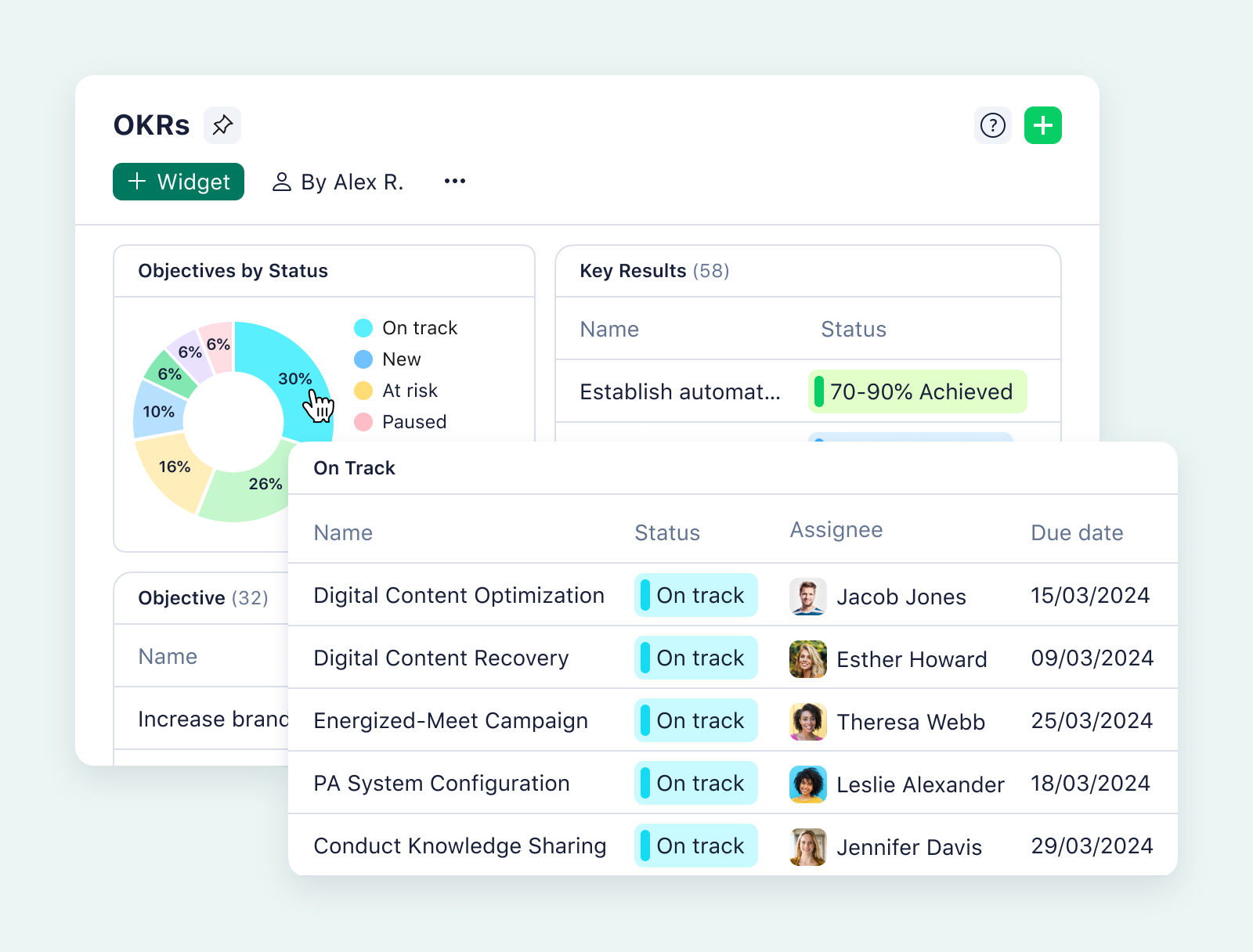
Wrike brings together everything you need for smoother collaboration
The best project management platforms are not just places where you manage tasks and to-do lists. They should be places where you can talk about work, store and share resources, and collaborate.
- Wrike lets you easily collaborate with reviewers. In Asana, reviewers can’t leave approval comments. Plus, you aren’t able to request a guest review to approve work. With Wrike’s approvals, you can collaborate fully during the review process and assign as many colleagues or internal/external approvers to tasks as you need.
- Wrike has over 400 integrations (while Asana only has 200). You can connect Wrike with Slack, Excel, Google Docs, your CRM, and more. But if you want to integrate with a tool we don’t already have connections with, we can build that integration via our API.
- Wrike brings all your work under one roof. With Wrike, organizations such as Sony Pictures Television have reduced the number of emails they send by 90%. By bringing all work into a single platform, Sony also spends 40% less time to deliver on projects. Teams can track projects on the go too, thanks to our mobile app for iOS and Android.
- Wrike automates entire workflows across your integrations. Teams can use a dynamic request form to allow Wrike to set up automated workflows from start to finish. Wrike will automatically assign tasks, set up dependencies, and complete any repetitive tasks. These automations also work across integrated tools, including messenger apps, invoicing tools, and more.

2. Trello: A top alternative to Asana for small teams
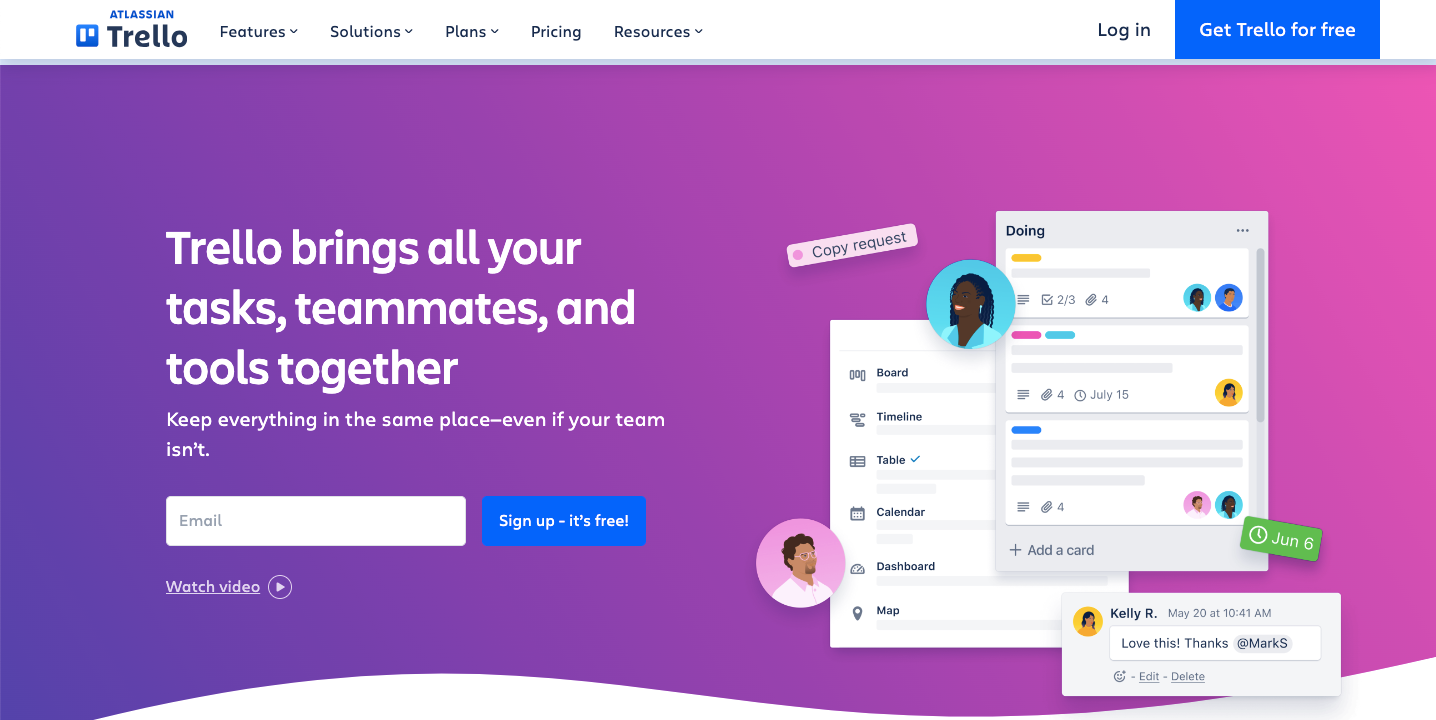
Trello is a task management software known for its simplicity and ease of use. It’s not nearly as sophisticated as the likes of Wrike. But it’s a platform like Asana that could be a good option for small businesses or teams managing simple projects.
Asana vs. Trello
What’s important to know about Trello is that it’s built exclusively around Kanban boards. These allow you to easily assign and view the status of different tasks.
Yet Trello has its own limitations, so let’s compare it with Asana to help you understand what’s best for you:
- Trello has a better Kanban board view than Asana. Both Asana and Trello offer board views, but Trello is specifically designed as a customizable Kanban tool. So if you prefer to work in a board view, Trello might be a better fit for you and your team.
- Trello has cheaper pricing. Trello and Asana both offer free versions, but they’re very limited in their functionality. To upgrade and get similar capabilities and views, you’d need to pay $10.99 per month per user (billed annually) for Asana’s Starter plan compared to the slightly less expensive $10 per month per user (billed annually) for Trello’s Premium plan.
- Trello has more free automations. Trello’s free plan is more designed for complex, repeatable processes than Asana. On Trello’s free plan, users can automate actions like various steps in their workflows. If you want to match that functionality in Asana, you’ll have to upgrade to one of its paid plans.
- Asana has a wider range of views than Trello. Asana offers a larger variety of views and better time tracking than Trello. On Asana’s free plan, users can leverage list, board, and calendar views, with more detailed views like timeline and workload available on other paid plans. Additionally, Trello doesn’t offer native time tracking like Asana does on its Advanced plan.
While both Asana and Trello are popular options for smaller businesses, neither is a good choice for larger teams. So if that’s you, rather than searching for a project management tool like Asana, it’s wise to choose a more customizable and scalable platform (such as Wrike).
3. Monday.com: An Asana competitor for spreadsheet visualization
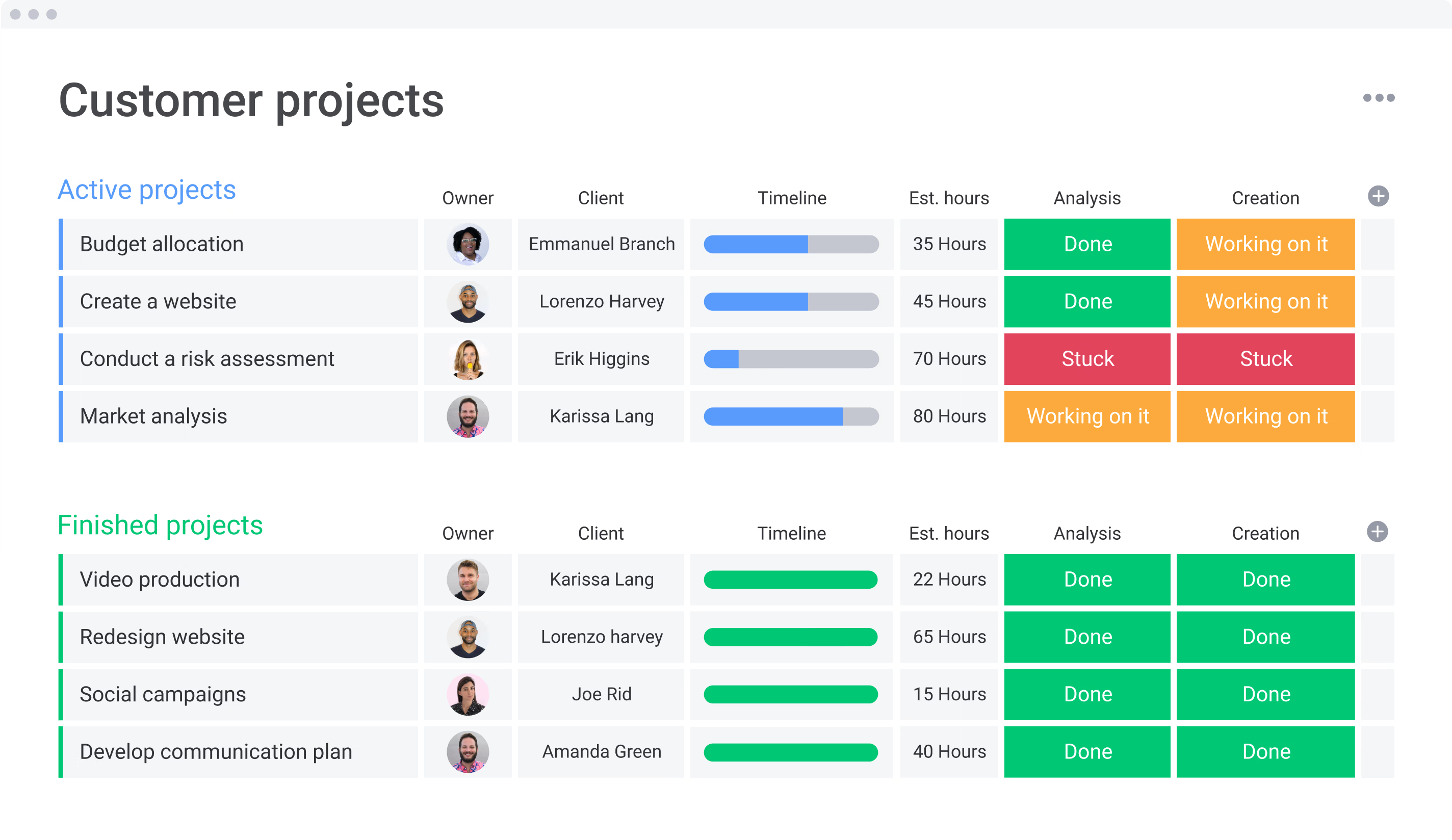
Monday.com is another alternative to Asana, known for its sleek automations and ease of use. It’s a cloud-based software that allows teams to create custom workflows to plan, run, and track processes, projects, and everyday work.
Asana vs. Monday.com
What makes Monday.com stand out is that it’s largely based around a spreadsheet format. As such, it primarily organizes your projects and tasks in columns and rows. This is not for everyone, particularly teams who want to move away from managing projects in spreadsheets.
Here’s how Asana and Monday.com compare:
- Monday.com has cheaper pricing. While both tools offer a “free forever” option, you’ll likely need to upgrade to access key functionality within each tool. On the first available plan, Monday.com is the more cost-effective option at $8 per month per user compared to Asana’s $10.99 per month per user (both billed annually).
- Monday.com has a better spreadsheet view. Monday.com is mostly a spreadsheet-like tool, while Asana provides a very limited spreadsheet view and focuses more on improving its other work views.
- Monday.com has easier time tracking. Monday.com offers great features and reporting for tracking time on the Pro plan for $16 per month per user (billed annually). To match that functionality in Asana, you’d either have to spend time building a third-party integration or upgrade to the Advanced plan for $25 per month per user (billed annually).
- Monday.com offers no native proofing functionality. Aside from allowing you to add comments to images in some areas of the platform through what it calls a file annotation feature, Monday.com doesn’t offer you much for proofing. Asana’s proofing is also pretty basic, limited to five file types.
8 other Asana alternatives to consider
There are many other project management tools out there to consider. If none of the above sound like a good fit for you, try one of the following:
- Hive: Hive is a tool that sources all its product ideas from its forum of users, to match their unique needs. Even so, it’s still not as customizable as Wrike and may come with a steep learning curve.
- Smartsheet: As its name suggests, Smartsheet is another project management tool that works like a spreadsheet. It can be a good fit if you like that familiarity, but some customers may find that limiting.
- Airtable: Airtable was born as a database tool and it still retains this character, meaning it’s much better suited to data-centric workspaces and use cases.
- Teamwork: Teamwork is a tool designed for client-facing work, including in marketing and design. It’s a really easy-to-use tool for project planning, but reviewers do say that customer support leaves something to be desired.
- Microsoft Projects: The project management offering in Microsoft’s Office suite, this can be a useful tool for current Office customers. However, it’s not nearly as flexible as the likes of Wrike.
- Jira: Jira was built as an Agile project management tool for software development teams. As such, it has some specialist features such as Scrum functionality and sprints.
- Basecamp: The company Basecamp was originally a design agency that built a project management tool for itself. It’s basic and easy to use, but it lacks some fairly standard features.
- ClickUp: ClickUp has lots of different project management features — from native to docs to internal chat — but some customers find the platform isn’t as reliable as it could be.
Choose Wrike and get a truly scalable project management tool
In this guide, we’ve covered 11 different alternatives to Asana to suit all needs. If you’re a large team working on complex projects, Wrike is simply the best choice. Streamline team management and have all of your workflows and processes standardized in one place.
Start a free trial to see how Wrike enables 360-degree project visibility, powers smart automation, and transforms strategy into results.





